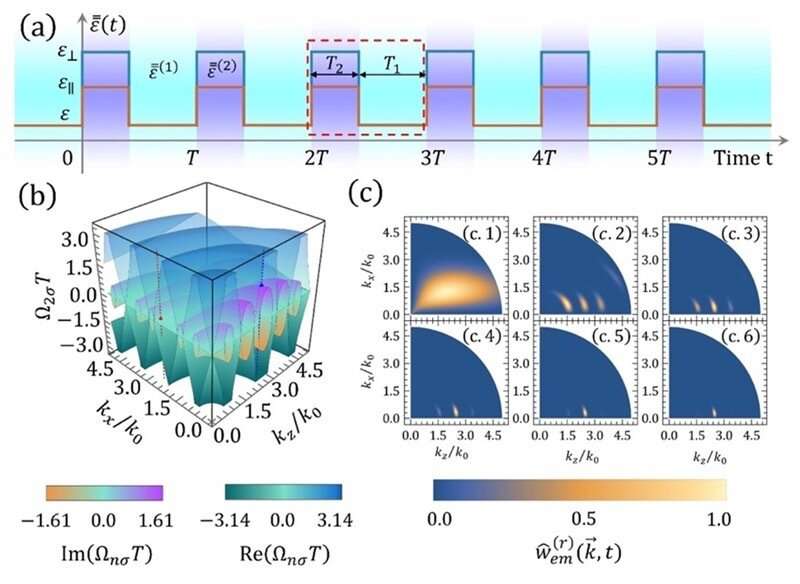(a) Schematic of the APTC; (b) Band structure of the APTC; (c) Normalized radiative energy in momentum space at various time instants of the APTC due to an embedded stationary charge. Credit: Physical Review Letters (2023). DOI: 10.1103/PhysRevLett.130.093803
A team led by Professor Huanan Li and Professor Jingjun Xu of the School of Physics of Nankai University, in collaboration with the team led by Professor Andrea Alù of the Advanced Science Research Center (ASRC) of the City University of New York and Professor Boris Shapiro of the Israel Institute of Technology, discovered that a stationary charge embedded in anisotropic photonic time crystals (APTCs) can extract energy from time modulation to produce coherent radiation and then couple with the Floquet mode in the momentum band gap to amplify it exponentially.
The research findings were published in Physical Review Letters, titled "Stationary Charge Radiation in Anisotropic Photonic Time Crystals."
They extended the idea of photonic time crystals (PTCs) to anisotropic homogeneous media to construct APTCs described by time-periodically-modulated permittivity tensors. A generalized temporal transfer matrix formalism was developed to study the radiation of a stationary charge in APTCs. It was found that APTCs can enable radiation of the stationary charge and manage emission features due to their reconfigurable anisotropic band structure in momentum space.
In contrast with the nonresonant tunable laser based on PTCs, the extreme lasing directionality in APTCs is achieved due to their inherent anisotropic band structure, which does not require source manipulation, such as precise control of the movement of free charges for delicate phase matching required to sustain the radiation process. This approach greatly extends the concept of nonresonant tunable PTC lasers to the scenarios of stationary charges, opening a new avenue within a research area to control radiation of charges.
More information: Huanan Li et al, Stationary Charge Radiation in Anisotropic Photonic Time Crystals, Physical Review Letters (2023). DOI: 10.1103/PhysRevLett.130.093803
Journal information: Physical Review Letters
Provided by Nankai University
























